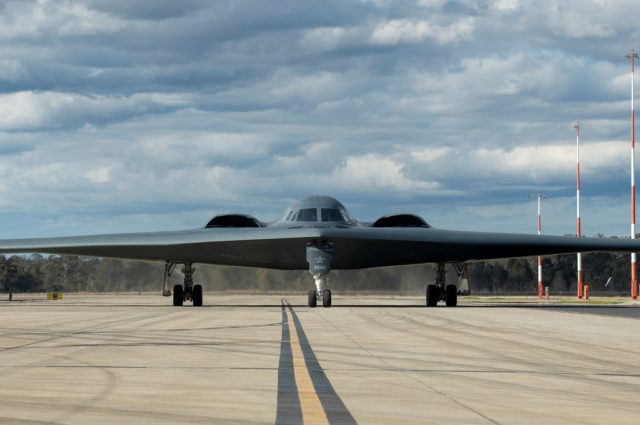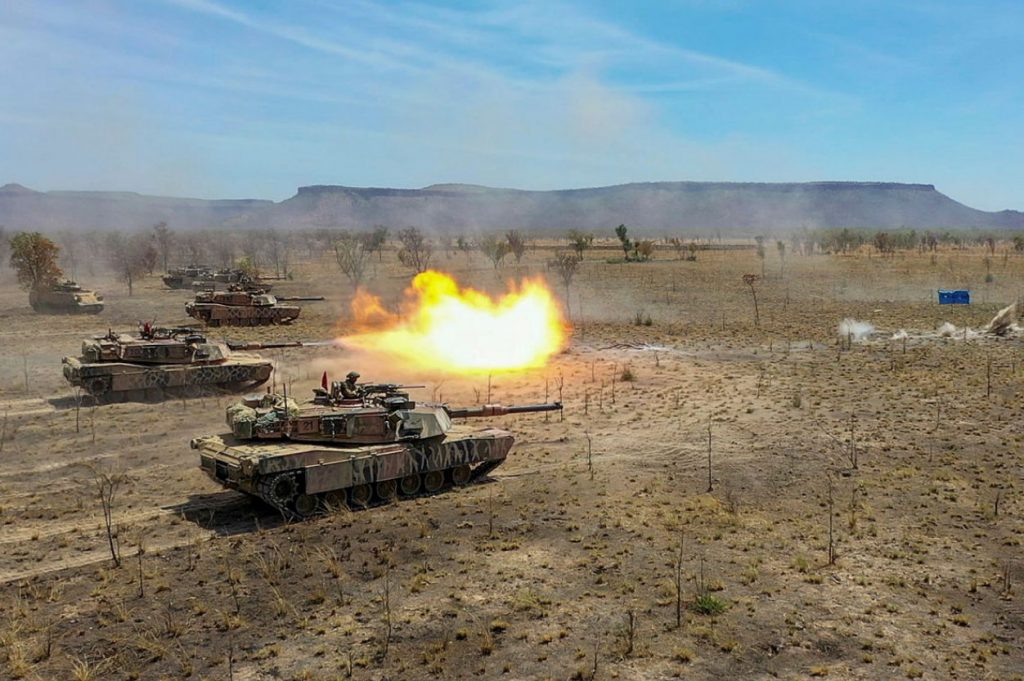
US Air Force B-2 Spirit stealth bombers arrived at Royal Australian Air Force (RAAF) base Amberley on July 10 for a regularly-scheduled deployment.
This is the first time since August 2020 that the B-2s deployed to the Indo-Pacific Command (INDOPACOM) area of responsibility as part of a Bomber Task Force.
The aircraft from the 509th Bomb Wing, Whiteman Air Force Base, Missouri, will be operating out of Australia, supporting the Enhanced Cooperation Initiative under the Force Posture Agreement between the United States and Australia.
The EAC initiative began in February 2017 to build on a broad range of long-standing air exercises and training activities undertaken between the two countries. Its aim is to deepen advanced air-to-air integration between the Australian Defence Force and United States air elements to enable the two countries to operate together seamlessly.
The US airmen will employ the B-2 to conduct training missions and strategic deterrence missions with allies, partners and joint forces in support of a free and open Indo-Pacific.
Several PACAF KC-135 Stratotanker aircraft will be supporting the B-2 Spirit aircraft, providing refueling capability for the visiting bomber aircraft while they integrate with the Royal Australian Air Force to conduct various training exercises and activities.
“This deployment of the B-2 to Australia demonstrates and enhances the readiness and lethality of our long-range penetrating strike force,” said Lt. Col. Andrew Kousgaard, 393rd Expeditionary Bomb Squadron commander. “We look forward to training and enhancing our interoperability with our RAAF teammates, as well as partners and allies across the Indo-Pacific as we meet PACAF objectives.”
Marine Rotational Force-Darwin (MRF-D) exercise Koolendong kicks off
The arrival of the bombers in Queensland coincided with the kick-off of the joint exercise Koolendong that is undertaken by US Marines of the Marine Rotational Force-Darwin (MRF-D) and members of the Australian Defence Force from Australian Army’s 1st and 13th Brigade, and Royal Australian Air Force’s 36th, 37th and 75th Squadrons.

The three week warfighting exercise is being held at training areas in the Northern Territory and for the first time, in Western Australia to simulate a response to a regional security crisis.
Australian Army Colonel Marcus Constable, Commander Headquarters Northern Command said the exercise built on the recent successes of Exercises Southern Jackaroo and Crocodile Response.
“This annual exercise allows the ADF to rehearse with the US Marines in a combined arms littoral combat scenario,” Colonel Constable said.
“Koolendong strengthens the US-Australian relationship, advances and validates USMC-ADF interoperability and demonstrates preparedness to respond to a regional crisis.”
US Marine Colonel Christopher Steele, MRF-D’s Commanding Officer, said the culminating exercise of the MRF-D demonstrates the potency of the US and Australian alliance.
“We are deploying significant forces by land, air and sea to training areas in both WA and the NT including Mount Bundy Training Area, RAAF Base Curtin & Yampi Sound Training Area,” Colonel Steele said.
“This mid-intensity warfighting exercise replicates elements of a combined joint littoral combat operation supported by capabilities from the US Army and US Air Force.”


























